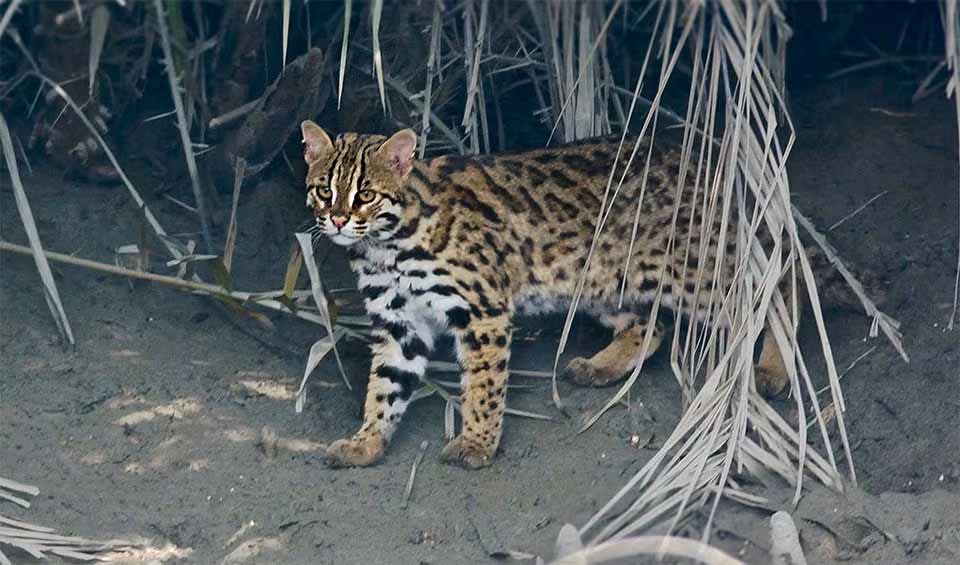This intriguing species has adapted to a variety of habitats, ranging from the lush, dense jungles to the bustling life of urban cities, showcasing its incredible adaptability and resilience. The leopard cat’s appearance is striking and easily identifiable by its luxurious coat, which resembles that of its namesake, the leopard. This coat is adorned with beautifully patterned rosette-shaped spots, serving as a visual marvel and an effective camouflage.
Despite its endearing appearance, the leopard cat is anything but a simple, cute creature. It is a formidable predator, equipped with a variety of skills tailored for hunting. Among its most notable abilities is its proficiency in climbing trees. This skill is not merely for exploration or escape; it is a strategic advantage for hunting from above, allowing the leopard cat to ambush its prey with precision and agility. Additionally, the leopard cat is an adept swimmer, capable of traversing water bodies in pursuit of prey or new territories.
What truly distinguishes the leopard cat from other members of the feline family, however, is its unique personality. Unlike the solitary nature observed in many wild felines, the leopard cat exhibits a more social and playful demeanor. It engages in playful behavior not only with objects, which is common in many animals as a form of practice for hunting techniques but also with other animals.
In addition to its playful nature, the leopard cat possesses a distinctive vocalization that sets it apart from other cat species. Its call is a fascinating blend, sounding somewhere between the familiar meow of domestic cats and a growl. This vocalization is a means of communication and an expression of its unique identity among the vast family of felines. It serves as a reminder of the leopard cat’s wild essence, blending familiar and exotic elements.
Distribution
 Afghanistan
Afghanistan Bangladesh
Bangladesh Bhutan
Bhutan Cambodia
Cambodia China
China Hong Kong
Hong Kong India
India Japan
Japan Korea
Korea Laos
Laos Macao
Macao Malaysia
Malaysia Myanmar
Myanmar Nepal
Nepal Official estimate
Official estimate
 North Korea
North Korea Pakistan
Pakistan Official estimate
Official estimate
 Russia
Russia Official estimate
Official estimate
 Singapore
Singapore Official estimate
Official estimate
 Taiwan
Taiwan Thailand
Thailand Vietnam
VietnamAnything we've missed?
Help us improve this page by suggesting edits. Glory never dies!
Suggest an editGet to know me
Terrestrial / Aquatic
Altricial / Precocial
Polygamous / Monogamous
Dimorphic (size) / Monomorphic
Active: Diurnal / Nocturnal
Social behavior: Solitary / Pack / Herd
Diet: Carnivore / Herbivore / Omnivore / Piscivorous / Insectivore
Migratory: Yes / No
Domesticated: Yes / No
Dangerous: Yes / No




